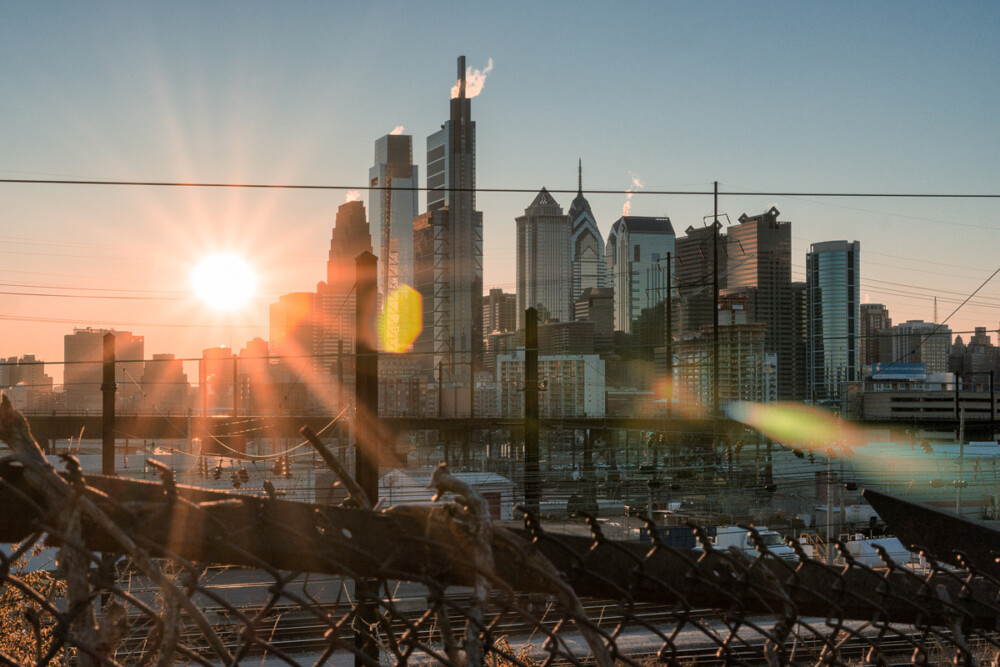
Can Philly quit its natural gas addiction? Vicinity Energy holds one piece of the decarbonization puzzle.
To cut our ties with natural gas, we must reimagine powering our city. Luckily, Philly has a solution with a green path forward.
Pennsylvania was the second-largest natural gas producer in the United States in 2021, accounting for 21.8% of the total share of production.
If you peek into a Philadelphia home, you’ll likely see a gas stove or radiators. Philadelphia residents have long relied on natural gas to heat homes and power stoves.
But this dependence on natural gas comes at a steep price: to the environment, our health, and our wallets.
For one, natural gas isn’t natural – it’s a processed fossil fuel made almost entirely of methane, a greenhouse gas about 80 times more potent than carbon dioxide. Plus, it’s dangerous: gas leaks can lead to health risks, explosions, and other hazards.
Residents are most impacted by increased gas prices due to the global energy crisis. Natural gas customers are expected to pay at least 25% more nationwide compared to last winter, with some Philadelphians essentially paying a second rent with the cost of heating bills. “Philadelphia is one of the most energy burden cities,” said Saleem Chapman, Chief Resilience Officer and Director Office of Sustainability, the City of Philadelphia. “That means that a large proportion of our residents spend a significant portion of their overall income on energy costs,” according to Chapman.
Rethinking natural gas
Philadelphia Gas Works (PGW) is the largest municipally-owned gas utility in the country, supplying over 70% of local households and over 500,000 customers with natural gas. But breaking away from its namesake product faces many challenges.
The PGW diversification study was released in 2021, considering options like decarbonized gas, hybrid electrification, and geothermal systems. However, getting away from gas is complicated due to PGW’s 1,600-member workforce and its hesitancy to modify its business model.
How can PGW change its business model without going out of business? The study states, “Regardless of the greenhouse gas reduction pathways pursued, PGW’s existing legal and regulatory structure and cost recovery mechanism does not position the utility to be able to support the achievement of the City’s carbon neutrality goal.”
A greener, cleaner solution
To break the city’s natural gas addiction and transition to a more sustainable energy future, electrification must become central to reducing Philly’s carbon footprint. After all, Philadelphia has a goal of going carbon neutral by 2050.
Electrification can be a greener option for residents, replacing gas stoves and heating and supporting technologies to produce steam. While steam may seem outdated, it can be a highly efficient and sustainable heat source, especially for commercial buildings, the second-highest global carbon emitters.
According to Matt O’Malley, Chief Sustainability Officer at Vicinity Energy, the concept of using district energy to supply steam began in the Roman Times with aqueducts over 2,000 years ago: “It’s a straightforward concept. A central facility creates steam, and then that steam is pushed through pipes that connect to buildings for heating, cooling, sterilization, or humidification.” It not only eliminates the building’s need for onsite boilers and increases building efficiency but also can lower the carbon emissions that the building emits through the integration of more sustainable fuel sources.
Cities and colleges have used steam for over a century, making it a key part of the transition to a low-carbon future.
District energy works best in downtown cores with dense buildings to deliver the energy. “District energy will be a part of the strategy for how we continue to ensure a successful transition for a larger commercial building, given that most of the city’s infrastructure for that technology is located in the center city area,” said Chapman.
Vicinity Energy‘s Grays Ferry facility delivers steam through 41 miles of pipes in Philadelphia, including the Philadelphia Museum of Art, the Curtis Building, and Comcast Tower. Although the facility’s boilers originally ran on coal, they have evolved, using natural gas and biogenic fuel made from waste cooking oil recycled from nearby restaurants. This fuel flexibility makes it easy for Vicinity to switch to renewable energy to decarbonize its operations.
To see how Philly’s facility could ditch natural gas, let’s look to Boston.
In Boston, Vicinity is installing an electric boiler, industrial-scale heat pumps, and thermal storage to use renewable energy to produce carbon-free steam, known as eSteam™, to decarbonize its customers’ buildings starting in 2024.
Vicinity has already made significant investments in Philadelphia’s infrastructure, which has enabled the district energy system to reduce GHG emissions by 300,000 tons annually and plans to install electric boilers, heat pumps, and thermal storage to bring eSteam™ to its Philly customers in the coming years.
Philadelphia’s buildings and industry account for 79% of the city’s total CO2 emissions, which means switching from fossil fuels could have a profound impact. “Vicinity is taking 90 million square feet of Center City Philadelphia and offering our customers an opportunity to decarbonize in a proven way,” said O’Malley.
Despite this progress, there’s still resistance to change.
At a time when Philadelphia should be shifting away from natural gas, PGW is incentivizing buildings to switch from district steam to gas-fired boilers, which would cement fossil fuel use for decades. The National Park Service’s Independence National Historic Park recently released plans to switch from district energy to gas boilers, contradicting net zero emission goals.
Environmental advocates like Joe Minott, Executive Director of the Clean Air Council, have criticized these PGW actions considering sustainability, safer utilities, and costs, as low-income Philadelphians would be responsible for the fixed costs of fossil gas distribution. Minott pointed to a steam loop system as the potential best path to decarbonizing Philadelphia’s downtown buildings. Additionally, leaders have pointed out that renewables would ensure resilience and security.
Compared to the negative impacts of more gas boilers, Vicinity understands the potential for district energy as a multifaceted solution. “We must look at climate change through the lens of intersectionality. Strong, effective, and robust action will mean job creation. It will mean improved health outcomes. It will mean, quite literally, saving the planet,” said O’Malley.
Photo by Kelly Kiernan on Unsplash









